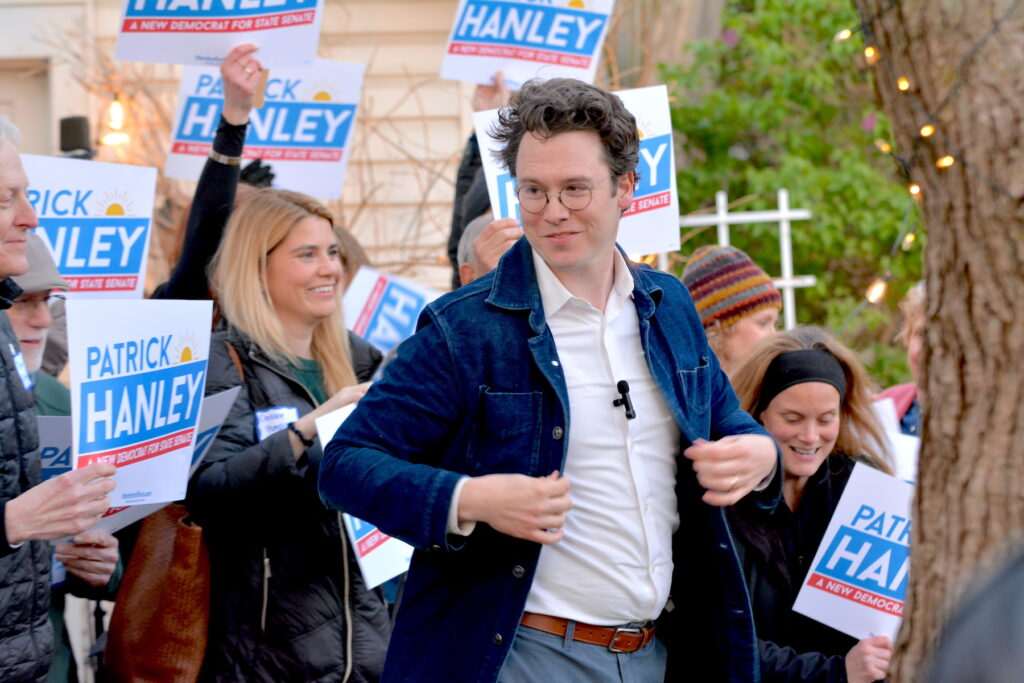
Winnetka trustees hit pause on new lakefront construction ‘to study this and do it right’
9-month moratorium does not affect projects already in motion
When it comes to protecting the Lake Michigan shoreline, the Winnetka Village Council has heard from residents who want more done.
And since introducing four ordinances two weeks ago with that goal in mind, trustees have continued to hear from residents with opinions on the correct course of action.
But when it came time for a final decision on the ordinances, there was only minimal disagreement among the trustees themselves, as all but one of the measures received unanimous support at the council’s regular meeting on Tuesday, July 18.
The ordinances, which regulate lakefront development, were the result of ongoing discussions among trustees that gained steam in January. Those discussions were prompted, in part, by a controversial land exchange agreement between the Winnetka Park District and the Ishbia family, as well as the same family’s plan to consolidate multiple lakefront lots to construct a family home.
Village President Chris Rintz previously stated that residents shared their concerns with the trustees about the construction project and how it may be negatively impacting the bluffs along the lakefront.
The present concerns led the trustees to consider four regulatory ordinances.
The one that generated the most discussion among the public and trustees was creating “a study and permit abeyance period for construction in the steep slope area along Lake Michigan.”
The ordinance puts a nine-month pause on the issuing of new construction permits in the “steep slope,” defined as an area where vertical and horizontal dimensions are greater than 10 percent, according to council documents. The zone is listed as “all land between the bottom of a Steep Slope and the top of the Steep Slope, and also the land that is 40 feet landward from the top of a Steep Slope.”
In total, 14 residents, most of whom were lakefront property owners, spoke primarily against the construction pause. Many of the speakers were concerned that it would negatively impact their property values and prevent them from doing necessary home improvements and repairs on their property, including the bluffs.
And you know what? We may do nothing. But we at least have to get educated about what we’re talking about and then understand the implications of it.”
Chris Rintz, Winnetka village president about the nine-month construction pause
Trustee Tina Dalman, who had previously shared concerns about what was referred to as a “moratorium,” agreed with many who commented, and ultimately was the only trustee to vote against approving the ordinance.
“In a perfect world, I’d suggest that we don’t need a moratorium,” she said. “I think we’ve heard ample testimony that people are making rational, reasonable investments into their bluff.”
While Dalman stated she understood the concerns about doing work in the steep slope area, she said her main issue was with its 40-foot coverage.
“I don’t know if there’s a rational basis for us to put a moratorium in place for 40 feet back from the top of the bluff,” she said.
Instead of a moratorium, Dalman suggested an ordinance that would establish engineering requirements for bluff construction and stabilization, since she said it appeared that most of the residents speaking up were already doing that.
None of the other trustees suggested lowering the threshold from 40 feet.
Trustee Kim Handler said she supported the 40-foot limit because it was consistent with other lakefront communities, and that it was also a number reportedly suggested by coastal engineers.
“Rather than just throw a dart at a dart board and pick another number, I guess I feel that has some logic to it,” she said.
Trustee Bob Dearborn, who participated in the meeting remotely, asked a clarifying question about whether or not the 40 feet would only apply to “disturbing existing open soil,” which was confirmed by Rintz.
“It’s just no new building within that zone,” Dearborn said.
The approved pause includes clarifications and exemptions. According to the ordinance, “construction activity” only applies to work that needs a permit; general maintenance is permitted, as is restoration of any property that “suffer(s) a casualty loss” and that any work in a pre-existing building will be allowed to continue.
Additionally, Trustee Rob Apatoff put forth an amendment that specifically impacts three properties that have applied for construction permits that have not yet been approved. His amendment, which trustees unanimously supported, allows those three projects to continue through the permitting process, and as long as it is determined by the coastal engineer that the work will not negatively impact the bluff, it will be allowed to go forward.
Addressing the nine-month abeyance period, Rintz said that length was chosen “to make sure we have the comfort and the time to do what is necessary and do what is right. And you know what? We may do nothing. But we at least have to get educated about what we’re talking about and then understand the implications of it.”
A study session is planned for September, when the lakefront will once again be the main discussion topic.
In direct response to a comment about creating engineering standards, Rintz said that’s something the board expects to talk about in the future.
“But we don’t even know what appropriate engineering requirements look like,” he said. “That’s why we need nine months, to take the time to get everybody in this room back in here on a couple of occasions and understand what you guys have done, how it worked, how it didn’t work, and how we might do a better job of shepherding this thing.”
Before the trustees voted, Rintz read the stated purpose of the abeyance period, which includes holding public meetings and hearings to “develop a more comprehensive amendment to the village code and provide related procedures to ensure that construction on the bluffs and the steep slope areas of the bluffs are consistent with the village’s goals and policies.”
He noted that the village does not currently have any rules about bluff construction.
“We aren’t looking to overreach and stomp on people’s property rights,” Rintz said. “We’re just taking time to study this and do it right.”
He also invited everybody who made public comments on Tuesday to any future meetings and study sessions, because he said their input will be critical to any future regulations the board could approve.
The remaining three ordinances — which established a lakefront overlay district, created a map of what would be included in that district, and clarified what work does and does not need a permit — were all approved unanimously and without discussion or anyone offering public comment.
The Record is a nonprofit, nonpartisan community newsroom that relies on reader support to fuel its independent local journalism.
Become a member of The Record to fund responsible news coverage for your community.
Already a member? You can make a tax-deductible donation at any time.

Peter Kaspari
Peter Kaspari is a blogger and a freelance reporter. A 10-year veteran of journalism, he has written for newspapers in both Iowa and Illinois, including spending multiple years covering crime and courts. Most recently, he served as the editor for The Lake Forest Leader. Peter is also a longtime resident of Wilmette and New Trier High School alumnus.


